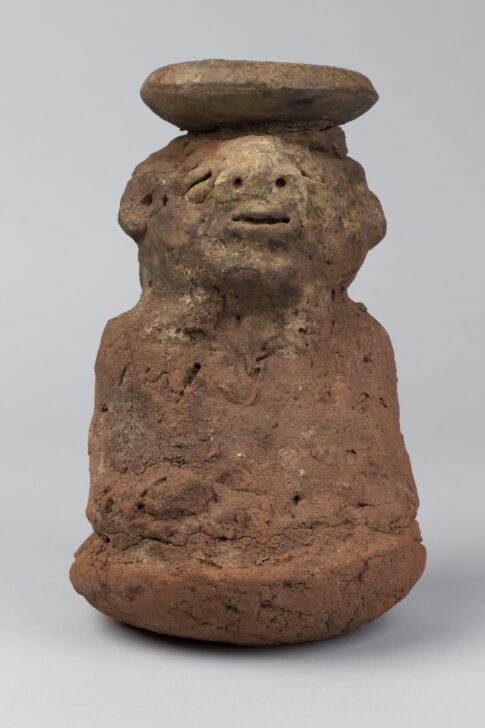Vessel
Yoruba

Description
Subject Matter:
Eshu, also known as Elegba or Elegbara, is the Yoruba orisa (god) known for his contradictory nature. Often called the 'trickster' god, Eshu has been associated with crossroads, markets, and Ifa divination, all places where one's fortune can rapidly change. He also acts as a messenger between humans and other orisas. Conical shaped figures of Eshu made from red clay, called laterite or yangi, date back to the 17th century. As cowrie shells once served as currency in Yoruba-speaking areas, their use to form the eyes of Eshu is at once a sacrifice of wealth and a display of generosity. Both act as an appeal to Eshu, as whatever he could give, he could also take away.
References Cited:
Lawal, Babatunde. 2012. Visions of Africa: Yoruba. Milan: 5 Continents Editions.
Pemberton, John. 1975. "Eshu-Elegba: The Yoruba Trickster God", African Arts, Vol. 9, No. 1.
Thompson, Robert Farris. 1983. Flash of the Spirit: African and Afro-American Art and Philosophy. New York: Random House.
Physical Description:
Red clay vessel in the form of a rounded cylinder with the upper portion in the form of a face. The eyes are cowrie shells set into the clay, while the nose is broad and the mouth underneath is thin. Small semi-circular ears protrude from the each side of the face. The vessel is topped by a circular rim, the back portion of which is missing.
Usage Rights:
If you are interested in using an image for a publication, please visit https://umma.umich.edu/request-image/ for more information and to fill out the online Image Rights and Reproductions Request Form.